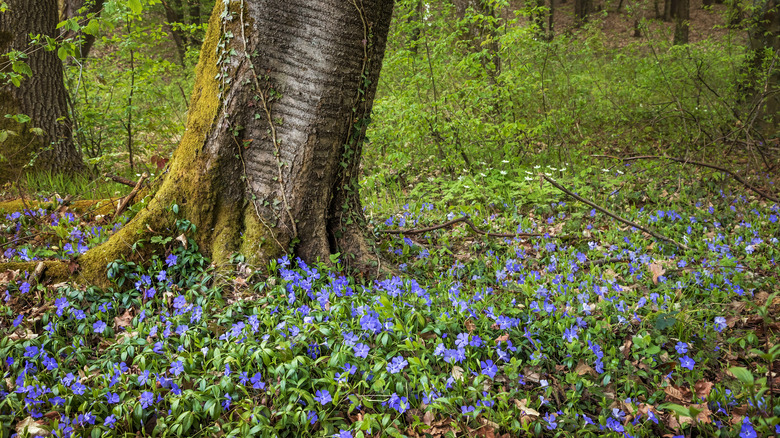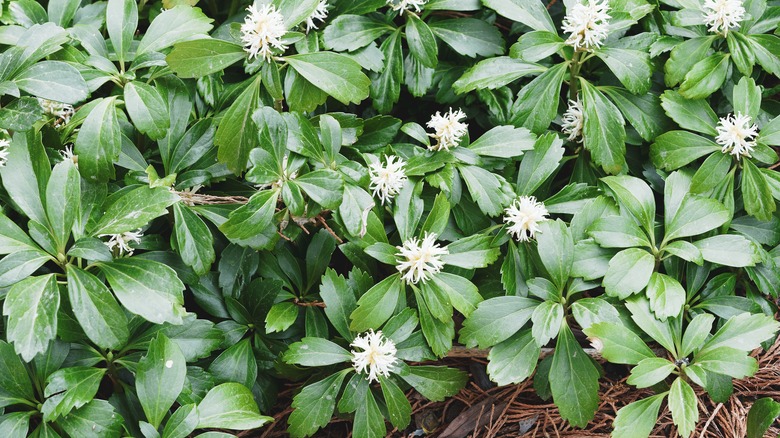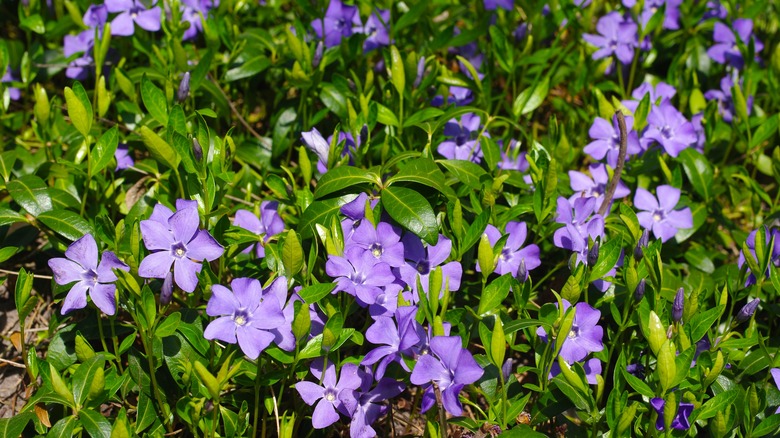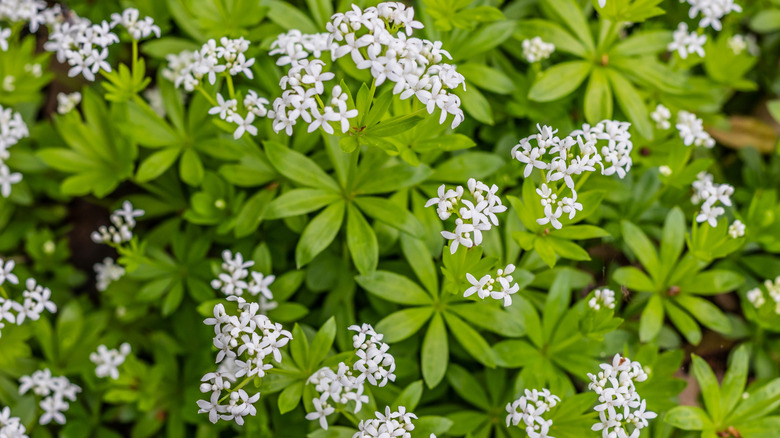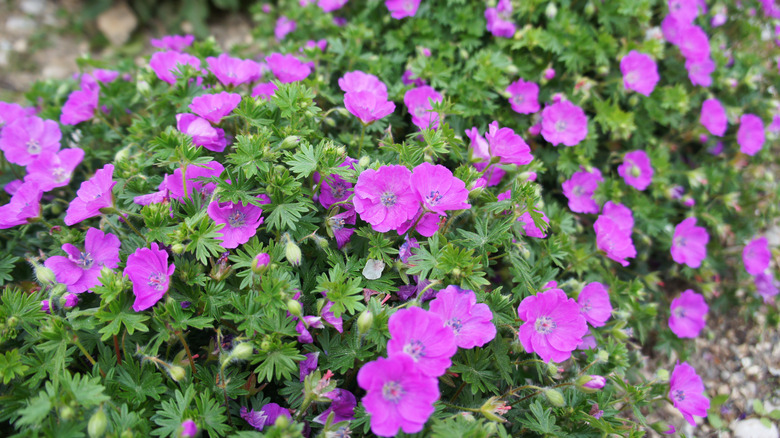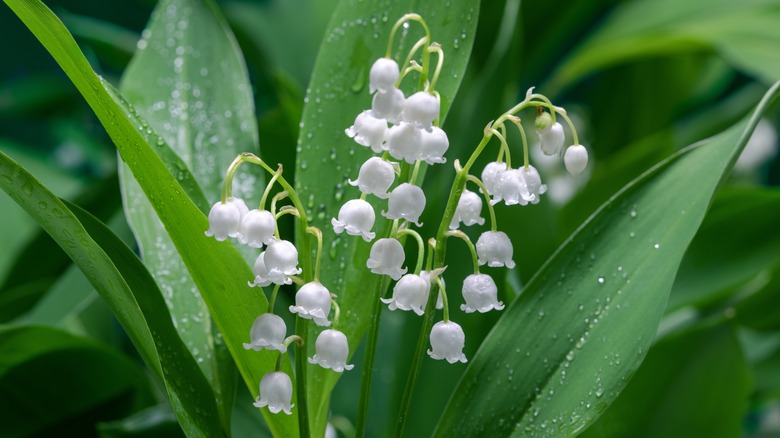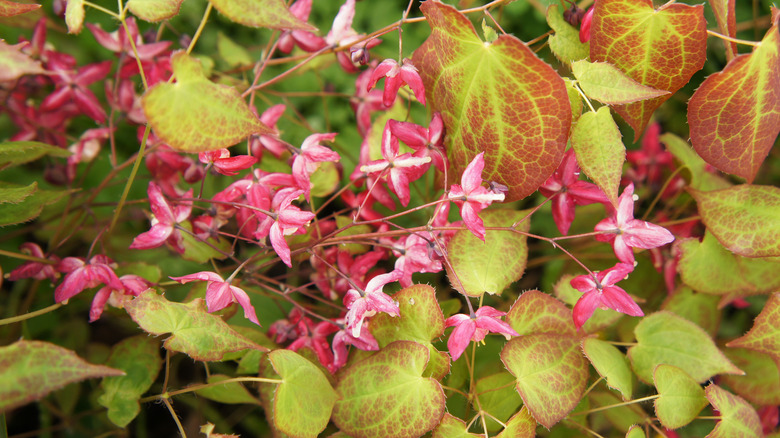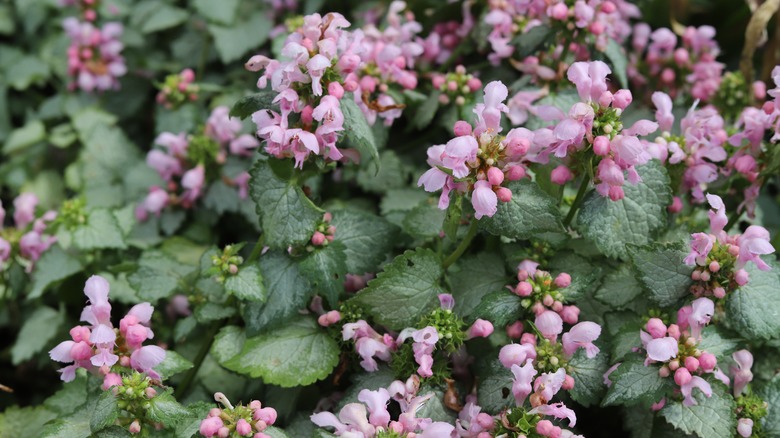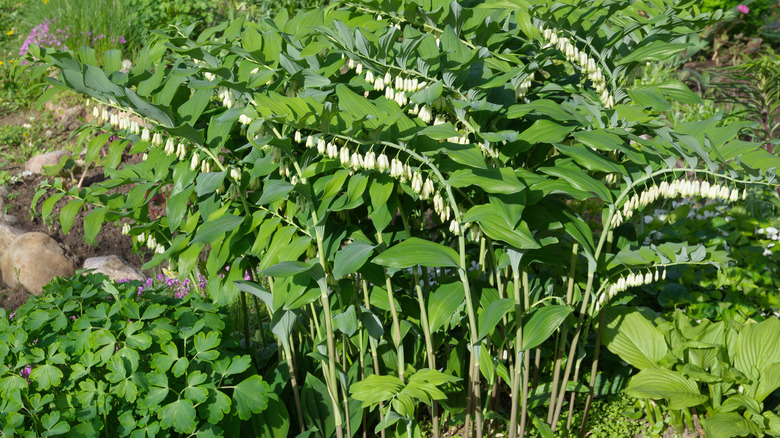8 Easy-To-Grow Ground Cover Plants That Thrive Around Tree Roots
When choosing ground cover plants, there are a few factors to consider. How much sunlight do they need? Do they flower? Ground covers are a good choice to plant beneath trees. There are a number of flowering ground covers that do well in partial or full shade, don't need too much water (and so won't suck up too much water needed by the tree) and also have shallow root systems, meaning they can grow fine over an area with tree roots below. Some flowering ground covers that thrive beneath trees include pachysandra, barrenwort, vinca, and sweet woodruff.
Before deciding which ground cover plants might work best for you, decide how you want the area to look. If it's a large woodland space, you may want to select more than one ground cover instead of just one variety. You might want to consider the color and timing of flowers in the ground covers and how they might look with other flowers in your landscape. There are a few evergreen ground covers, and these might add a spot of color to your winter landscape.
It's also important to consider that some plants used as ground covers are very vigorous growers, and might be considered somewhat invasive. Invasive perennials might be easy to control, or might prove difficult. Do a bit of research before planting to be sure the ground covers you choose are suitable for your location, and that you understand the amount of maintenance they will need.
Pachysandra
Pachysandra is a vigorous ground-cover that grows great in shade. It has glossy, evergreen leaves that form star-like clusters, and foamy white flowers in summer. The roots of this plant are fleshy and white and it spreads fairly quickly. Pachysandra is best planted away from flower beds, as it's considered somewhat invasive. It's perfect for a woodland area where it has room to spread out, or in contained beds where it's the only ground cover present, as the roots can begin to crowd out or strangle other perennials over time.
Vinca minor/periwinkle
Often called "periwinkle" for the color of its flowers, Vinca minor is sometimes confused with the other version of periwinkle, Vinca major, which has larger leaves on trailing vines, and larger flowers. Vinca minor works well as a ground cover in shady or woodland areas, filling in bare spots quickly with its small evergreen leaves. Flowers appear in spring and bloom for weeks, in hues of violet-blue, reddish-purple, or white. You should observe caution when deciding where to plant vinca, however, as it can spread invasively and the dense matted roots can smother other plants.
Sweet woodruff
Sweet woodruff is a wonderful shade-loving ground cover plant that deserves a place in more gardens. The delicate light green leaves have a pinwheel shape, and the tiny white fragrant flowers that appear in spring give this a fairy-like quality. It is a fairly drought-resistant plant, but performs best with regular watering or rainfall. The leaves are known as an ingredient in traditional May wine, made for May Day. Sweet woodruff is also very low maintenance and non-invasive, with lightweight roots that are easy to dig up and divide.
Cranesbill/hardy geraniums
Perennial geraniums, known as cranesbill geraniums, are cottage garden favorites for their easy care and colorful flowers. The variety most suitable for ground cover planting is Geranium sanguineum, which spreads by rhizome-like roots, producing smaller flowers that grow close to the plant. There are a number of cultivars available in colors ranging from white to pale pink to dark magenta, including 'Album' (white flowers), 'Elke' (pale pink), and 'New Hampshire Purple' (white with purple eyes). This differentiates it from the hybrids like 'Johnson's Blue' or 'Orion' whose flowers grow on trailing vines.
Lily of the valley
Lily of the valley is a common woodland plant that thrives in shade and poor soil. It produces tiny stalks of delicate, bell-shaped flowers in spring that exude a rich floral fragrance, famous for inspiring a popular perfume (Coty's "Muguet des Bois"). Once the flowers fade, the leaves stay green until late summer, then turn brown. The plant becomes a bit unsightly late in the season, so some gardeners mow it. Lily of the valley is invasive and somewhat hard to get rid of, so keep it confined to areas where you can maintain it easily.
Barrenwort/Epimedium
Epimedium, also known as barrenwort, is a robust ground cover that forms dense, thick mats of roots. The attractive, veined green leaves (which may be deciduous or evergreen) appear in spring, followed by delicate flowers in shades of pink, yellow, or orange, depending on the variety. Epimedium does well in shade, prefers a well-draining soil, and forms a thick carpet of ground cover to protect tree roots. It spreads fairly slowly, and is not invasive. To divide it, it's easiest to dig up a section of roots in autumn, then cut the mat into pieces and replant them.
Lamium/dead nettle
There are a few varieties of lamium (also known as dead nettle or spotted dead nettle), a low-growing plant with variegated leaves in shades of pastel green, and flowers of white, pink, purple, or yellow. Lamium works well in shade containers as an attractive "spiller" plant. It spreads on trailing stems that meander along the ground. This plant is not invasive and spreads somewhat slowly. Lamium makes a lovely deciduous ground cover, with delicate colors that light up shady areas. Trimming the stems back once flowers have faded keeps the plant looking neat and encourages new growth.
Solomon's seal
If you're seeking a ground cover for a shade that has some height, Solomon's seal is one to try. There are a number of varieties, ranging from 12 to 36 inches tall, and these look great in woodland garden areas. These hearty shade plants have beautiful curving stems with bell-shaped creamy white flowers hanging beneath blue-green leaves. Some varieties have attractive variegated leaves. The root systems are vigorous and can be somewhat invasive once established, so choose an area where your Solomon's seal can spread out. It can be divided frequently to keep it under control.
